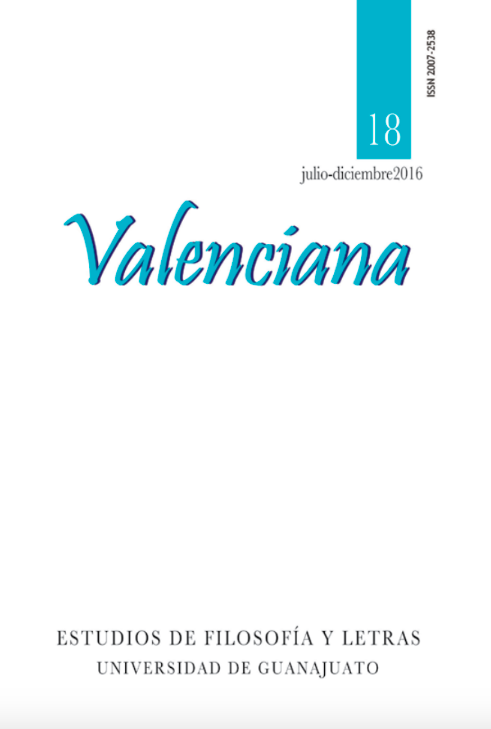Self-sacrificing for the sake of others, saving oneself throught art. Salarrúe’s “El Cristo negro”
DOI:
https://doi.org/10.15174/rv.v0i18.158Abstract
Literature has never been unawareof ethics. The first one is rooted in the second, and it takes from it the oxygen needed to build fictional worlds full of sense. However, some works are orchestrated around the problem of a complex relationship with ethics, like the case of this legend, oral in its origins and brought to highbrow literature by Salvador Arrué, Salarrué, the Salvadoran writer that puts the whole conflict nested in the idea of sacrificing one’s life to save the lives of others at stake. ¿Is it possible to have a new Christ on Earth without him turning out to be a demon? This seems to be the question behind the story told by him. Evil and Good merge together, and they become impossible to distinguish from one another. The writer finds the last redemption, the true chance for salvation, in the loving gaze of art, the only one he ́s able to understand.References
Bajtín, Mijaíl M. Hacia una filosofía del acto ético. De los borradores y otros escritos. Trad. Tatiana Bubnova. Barcelona: Anthropos-Universidad de Puerto Rico, 1997.
Colín, José Juan. “A Survey of Central American Literature. WritingfromtheHeart of theAmericas”. Boards of Regents of theUniversity of Oklahoma 83 (2009): 34-38.
Gennep, Arnold van. La formación de las leyendas. Barcelona: Alta Fulla, 1982. Ed. Facsimilar.
Jolles, André. Las formas simples. Trad. RosemarieKempfTitze. Santiago de Chile: Editorial Universitaria, 1972.
Munguía Zatarain, Martha Elena. “La construcción del universo poético en Cuentos de barro de Salarrué”. Istmo. Revista virtual de estudios literarios y culturales centroamericanos. 3 (2002). http://istmo.denison.edu/n03/articulos/universo.html
Oviedo, José Miguel. Historia de la literatura hispanoamericana. 3. Postmodernismo, Vanguardia, Regionalismo. Madrid: Alianza, 2001.
Ricoeur, Paul. Sí mismo como otro. Trad. Agustín Neira Calvo. México: Siglo XXI, 1996.
Roque Baldovinos, Ricardo. “Salarrué: una semblanza”. Guaraguao 7 (1998): 116-124).
--------------------------. “Cuentos de barro, cultura popular y reinvención nacional” (consultado en Academia.edu: diciembre 2015).
Salarrué. “El Cristo negro (Leyenda de San Uraco)”, en El ángel del espejo y otros relatos. Caracas: Biblioteca Ayacucho,1977.
Published
How to Cite
Issue
Section
License
Author(s) who publish in this journal do accept the next conditions:
According to copyright regulations, Valenciana does recognize and respect the authors’ moral right, as well as the right of property, which will be assigned to the journal for its diffusion in open access.
Valenciana does not charge authors for the submission, editorial process or publication in the journal.
All texts published and distributed by Valenciana (without exception) are supported by the license Creative Commons Attribution-NonCommercial 4.0 International (CC BY-NC 4.0), which allows third parties to use the publication as long as they mention the author and the first publication.
Authors can make other independent and additional contractual agreements for the non-exclusive use of his article published in Valenciana (e.g. including it in an institutional repository or in printed/electronic media), as long as it is explicitly clarified that the article was published for the first time in this journal.
For these purposes, authors must sign and send the letter of submission and copyright transfer form in a PDF file to this email address: revistavalenciana@gmail.com
This journal is under a license by Creative Commons Atribución-NoComercial-SinDerivadas 4.0 Internacional (CC BY-NC-ND 4.0)).













